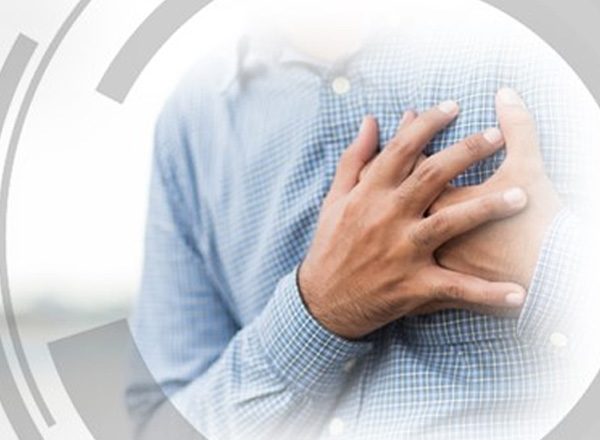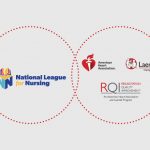October marks the official recognition of Sudden Cardiac Arrest Awareness Month. Cardiac arrest is defined as an electrical malfunction in the heart that causes an irregular heartbeat (arrhythmia), disrupting the flow of blood to the brain, lungs, and other organs.
By the Numbers
Each year, more than 356,000 EMS-assessed out-of-hospital cardiac arrests occur in the United States. According to the American Heart Association, about 90% of people who suffer out-of-hospital cardiac arrests die. Similarly grim, more than 209,000 in-hospital cardiac arrests occur annually in the United States, with survival rates at less than 26%.*
Without immediate recognition and CPR delivery, the chance of survival decreases significantly as each minute without lifesaving interventions passes. In 2013, the American Heart Association published a consensus statement regarding CPR quality. Endorsed by the American College of Emergency Physicians and the Society of Critical Care Medicine, the article affirmed five critical components of high-quality CPR and asserted that poor-quality CPR should be considered a preventable medical harm.
In a 2019 study, Dr. Lorna Dudzik researched the effects of implementing RQI’s low-dose, high-frequency CPR quality improvement program within a community hospital and found staff competence and confidence in psychomotor skill performance increased within the first year of implementation.
When least expected, a stranger, patient, or even loved one can experience cardiac arrest. The RQI Digital Portfolio of American Heart Association programs, including Resuscitation Quality Improvement® (RQI®) and HeartCode® Complete, safely and effectively achieves CPR quality improvement for learners who may encounter these intense situations:
On the Phone
Prior to hospital admission or even EMS arrival, 911 callers are frantic with worry after discovering someone in cardiac distress. The 911 dispatcher has seconds to calm the caller and verbally guide them through CPR.
For first first responders like of Charles County Department of Emergency Services call center, the RQI-Telecommunicator program’s critical cognitive learning, realism and support brings value to all dispatchers and centers.
On March 19, 2020, an older woman called 911. Her husband was unresponsive and needed help — fast. Crystal was fairly new to her job at the call center in La Plata, Maryland, but she was prepared to help this woman save a life, thanks in part to her training in delivering telephone CPR instruction through the RQI-Telecommunicator program.
Based on guidance from the American Heart Association, RQI Telecommunicator is a low-dose, high-frequency, blended-learning quality improvement program designed to strengthen competency and performance in the delivery of telephone CPR. It offers telecommunicators a blueprint for taking ownership of the critical minutes following a cardiac arrest.
Says Crystal, “The caller said she couldn’t tell if her husband was awake, and she didn’t think he was breathing. So right off the bat, I started the telephone CPR protocol. That’s one thing that RQI has ingrained in me: If they’re not breathing, even if you’re not sure, you need to move right away to CPR. The earlier you start, the better the outcome.” From the time the call came in until beginning chest compressions, Crystal and the caller were well within the time guidelines for starting CPR — hands to chest within 60 seconds from the address acquisition, or 120 seconds from the start of the call.
“The RQI-Telecommunicator program has helped me a lot. It’s an essential training for dispatchers because it creates a higher quality of care for patients, and that’s what saves more lives.”
Crystal received the Life Safety Award from the Charles County Government Department of Emergency Services for her incredible efforts, view the award recognition video.
In the Hospital
After caring for a patient recovering from a routine endoscopy procedure at Phoebe Putney Memorial Hospital, , RN and her colleagues were shocked to realize the patient went into cardiac arrest. “Usually problems occur in the procedure room when the patient is still under anesthesia, so the shock was that he came out of the procedure and was brought into recovery with no issue. Cardiac arrest really can happen at any time.”
While performing compressions on her patient, Paula was able to realize that she wasn’t getting deep enough from standing on the ground, so she immediately got on the stretcher to perform better compressions. “RQI gave us the confidence and skills level to be able to save our patient, which is a great feeling.”
Across the Street
Like Paula, was shocked to find herself thrust into rescue-mode. A psychiatric nurse practitioner, Elizabeth was enjoying a quiet weekend morning when her son alerted her to a neighbor in distress. Rushing outside, Elizabeth saw her neighbor was motionless on the ground with no breath or pulse.
Elizabeth performed a combination of chest compressions and mouth-to-mouth breathing on her neighbor. “It was like riding a bike as I performed CPR because of my frequent training at the VA. I could hear the program counting in my head with that computer voice the whole time,” she says, referring to the RQI Simulation Station used for skill assessment.
“I knew how hard to push down and how far. I was thinking about making sure to go deep enough while allowing time for recoil. I was remembering the head tilt, watching for the lungs to fill, the whole shebang! I can guarantee you I would not have remembered all of that with a CPR course only every two years.”
Expecting the Unexpected
The RQI Digital Portfolio of the American Heart Association provides immediate steps to ensure the safety of learners while achieving operational efficiency and saving more lives. This innovative model debuted in 2015, unsettling the CPR culture of a one-time, mass-training event occurring every 2 years. Resuscitation quality improvement has served as the catalyst for bringing the instructional design enhancements of education science to life.
For learners like Crystal, Paula, and Elizabeth, the training received through the RQI program helped them save a life when least expected. The rationale, design, and urgency for the new standard of care via a low-dose, high-frequency model was founded in research. And now, it is measured in research to continually assess maximum impact for increasing survival outcomes.
*From the American Heart Association and National Institute of Health’s 2021 Heart Disease and Stroke Statistics Report.









